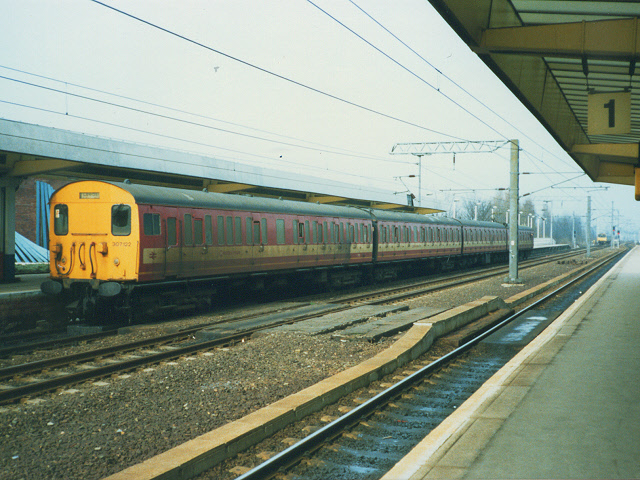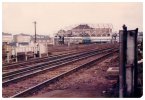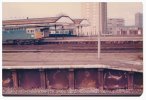I know it was a long time ago and before my time I might add but does anybody know how the Shenfield Metro service was maintained when the Class 306 EMU's were converted from 1500V DC to 6.25/25KV AC. The changeover from DC to AC was over a weekend in November 1960, I think 5-6th, so were the Class 306 run as 6 car trains instead of the regular 9 car trains beforehand so that a number could be converted to AC ready for after the changeover, I guess that is the only way they could do it, or was other EMU's used on the new AC Shenfield Metro service instead.
Another question I have is does anybody know how long the conversion took as there was a lot of work required to be done with two out of the three cars having to be modified.
The other DC units running from Liverpool Street were of course the Class 307 which were all sent to Eastleigh for conversion to AC in 1960 and the then new Class 302's took their place on the Liverpool Street-Southend Victoria and Liverpool Street-Chelmsford services until their return in 1962.
The former Great Eastern Main has had three different voltages used in it's lifetime as an electric railway, 1500V DC and 6.25/25KV AC, although Shenfield-Chelmsford was converted from 1500V DC to 25KV AC from the outset, can anyboby think of another railway that has used three different power systems, anywhere in France for example.
Another question I have is does anybody know how long the conversion took as there was a lot of work required to be done with two out of the three cars having to be modified.
The other DC units running from Liverpool Street were of course the Class 307 which were all sent to Eastleigh for conversion to AC in 1960 and the then new Class 302's took their place on the Liverpool Street-Southend Victoria and Liverpool Street-Chelmsford services until their return in 1962.
The former Great Eastern Main has had three different voltages used in it's lifetime as an electric railway, 1500V DC and 6.25/25KV AC, although Shenfield-Chelmsford was converted from 1500V DC to 25KV AC from the outset, can anyboby think of another railway that has used three different power systems, anywhere in France for example.
Last edited:




